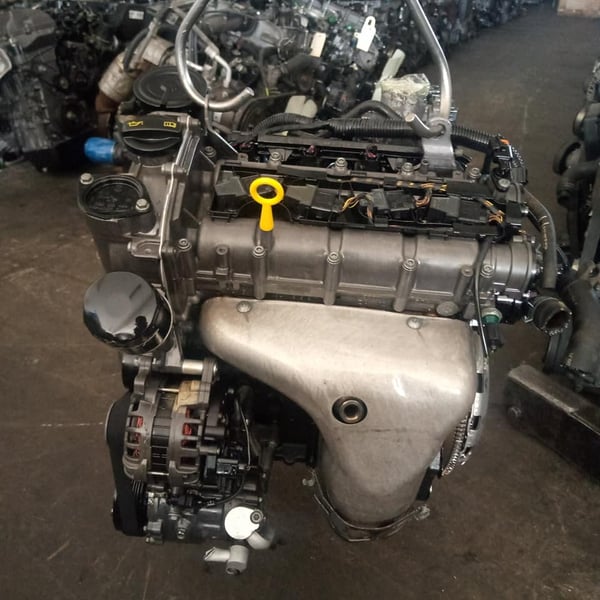Optimize fuel efficiency with a top-tier clp engine.
Wiki Article
Just How a Clp Engine Can Improve Performance in Different Industries
The advent of CLP engines notes a significant change in operational effectiveness across different markets, driven by their ability to maximize fuel usage and minimize downtime. Industries such as manufacturing and logistics stand to obtain significantly from their durable layout and constant power result, which promise to enhance operations and improve performance. As organizations progressively focus on sustainability along with effectiveness, the role of CLP engines ends up being a lot more important. What remains to be seen is exactly how these innovations will certainly form the future landscape of industrial procedures and their influence on broader economic fads (clp engine).Summary of CLP Engines
CLP engines, or Continual Fluid Propellant engines, stand for a considerable improvement in propulsion technology, particularly for room applications. These engines use a constant feed system that allows for the sustained expulsion of propellant, resulting in enhanced performance and efficiency compared to typical strong or hybrid propulsion systems. By preserving a consistent circulation of fluid propellant, CLP engines can accomplish more specific thrust control, which is essential for steering spacecraft in different mission circumstances.The style of CLP engines incorporates innovative materials and innovative gas monitoring systems. clp engine. This leads to reduced weight and boosted reliability, essential aspects for long-duration area goals. Moreover, the continuous procedure minimizes the danger of burning instability, a common obstacle in standard rocket engines.

Advantages in Production
The manufacturing of Continuous Liquid Propellant (CLP) engines presents numerous remarkable benefits that improve both effectiveness and cost-effectiveness. One of the primary advantages is the structured production procedure, which lowers the intricacy related to conventional propulsion systems. By utilizing liquid propellant, suppliers can attain higher precision in engine efficiency, causing optimized energy output and lowered waste.Furthermore, CLP engines help with a higher level of modularity, enabling for much easier integration right into different manufacturing lines. This flexibility can dramatically reduce lead times and boost overall functional versatility. Using CLP innovation also often tends to lessen the need for considerable maintenance due to less moving parts, which equates into lowered downtime and operational prices.

Applications in Logistics
Leveraging Continuous Fluid Propellant (CLP) engines look what i found in logistics offers significant advantages in functional performance and integrity. These engines provide a robust remedy for numerous transport demands, making it possible for the smooth activity of products across large distances. The fundamental design of CLP engines permits consistent power output, which converts right into smoother and more predictable transportation timetables.Among the crucial applications of CLP engines in logistics remains in durable freight transport, where they can drive both ground and airborne lorries. Their capability to preserve high performance under differing tons conditions makes sure that distribution timelines are satisfied, thus enhancing consumer contentment. Furthermore, CLP engines can be integrated right into automated logistics systems, promoting real-time tracking and optimizing route preparation.
In addition, the durability of CLP engines lowers maintenance downtime, allowing logistics firms to maximize their functional abilities. This is particularly valuable in warehousing operations, where efficiency in managing and transferring goods is crucial. As logistics proceeds to progress, the integration of CLP engines represents a forward-thinking approach that not just improves efficiency however also supports the sector's growing needs for reliability and rate.
Effect On Power Performance
How do Continual Liquid Propellant (CLP) engines improve power efficiency in transport? CLP engines make use of a consistent circulation of fluid fuel, enhancing burning procedures and maintaining a steady drive output. This style lessens power losses connected with typical combustion engines, where fuel shipment can vary and cause inefficiencies.The constant procedure of CLP engines permits a more efficient thermal cycle, leading to greater specific impulse compared to traditional engines. clp engine. This equates to reduced fuel usage for the exact same quantity of job done, considerably reducing functional expenses throughout different transport fields, consisting of aviation and maritime industries
Furthermore, the capability of CLP engines to preserve ideal performance under varying lots problems lowers the demand for frequent velocity and look at more info slowdown, better boosting gas performance. Boosted power performance not just adds to set you back financial savings yet additionally brings about decrease greenhouse gas exhausts, straightening with international sustainability goals.
Future Trends and Innovations
Emerging improvements in Continual Fluid Propellant (CLP) engine innovation guarantee to transform the landscape of transportation efficiency and sustainability. As sectors pivot towards greener options, CLP engines stand at the forefront, integrating cutting-edge materials and design methodologies that boost efficiency while reducing environmental influence.Among the most promising fads is the fostering of hybrid systems that integrate CLP engines with renewable resource sources. This harmony can optimize fuel intake and reduce emissions, straightening with worldwide sustainability objectives. In addition, developments in computational liquid characteristics (CFD) are helping with the style of even more aerodynamically effective engines, bring about decreased drag and boosted fuel effectiveness.
Moreover, the development of clever monitoring systems is readied to enhance functional efficiencies. These systems take advantage of data analytics and IoT innovation to maximize engine performance in real-time, making certain that the engines operate within their most reliable criteria.
As research visit this web-site proceeds to explore alternate propellant solutions-- such as biofuels and synthetic gas-- the future of CLP engines looks encouraging. By utilizing these technologies, industries can not only boost their efficiency however likewise add considerably to a cleaner, a lot more lasting future in transportation.
Conclusion
To conclude, CLP engines stand for a significant development in efficiency across numerous sectors. Their ability to optimize fuel usage and lower functional prices, combined with a continual feed system, enhances power output and operational dependability. The combination of sophisticated products and less relocating components decreases upkeep needs, while placement with sustainability goals positions CLP engines as a pivotal innovation for the future. Continued development in this field promises further improvements in efficiency and environmental performance.Report this wiki page